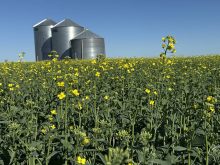Hog report not good news
Let’s hope they are wrong.
The United States Department of Agriculture’s pig reports shows the American hog herd is contracting.
But the pace of the liquidation is not fast enough to avoid having too many pigs chasing too little slaughter capacity this fall.
The implication is lower hog prices later this year, when the expectation was that prices would strengthen.
The hog production industry did not need this news. Even the most efficient hog farms have seen an operating profit for only a couple of weeks in the whole year.
Read Also

Huge Black Sea flax crop to provide stiff competition
Russia and Kazakhstan harvested huge flax crops and will be providing stiff competition in China and the EU.
Most expected that after the punishing low prices of last winter, American producers would rapidly cut back their breeding herds.
They are scaling down, but not at the needed pace.
The USDA report, released June 25, shows the total herd is down three percent from last year at the same time. Analysts expected it to be down 4.5 percent. The breeding herd is down six percent versus analysts’ expectation of a drop of seven percent.
Although the breeding herd was down six percent, the number of sows farrowed in the first five months of the year was down only three percent.
The number of hogs marketed in the first five months was up two percent and because they were fat beasts, the pork production was up more than three percent.
There is record pork supply in cold storage and lots of competing meats available.
The summer and fall farrowing intention numbers are also higher than expected.
So that means there will be more pigs than expected next year.
University of Missouri agricultural economists Ron Plain and Glenn Grimes are now forecasting fourth-quarter hog prices of $25-$28 (U.S.) per hundredweight. That’s below the break-even cost, which is considered to be about $30 (U.S.) per cwt. And if it is below the cost of production in the U.S., it’s below break even in Canada, too.
For the first quarter of 1999, Grimes and Plain forecast a U.S. price of $28-$31. The University of Missouri economists say the herd will eventually contract to a more manageable level, but it will take a while.
Unfortunately, what will force the downsizing will be bank managers telling their small hog producer clients that it’s time to shut the barn.
And the field will be left to the big corporate players.
















